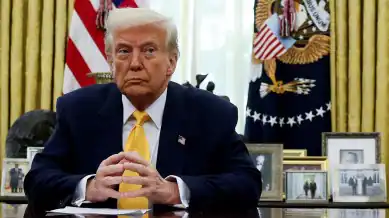The United States, as the world’s largest economy, plays a crucial role in global trade. When the U.S. imposes tariffs—especially on key industries—it impacts not only its economy but also its closest allies, including the other G7 nations: Canada, the United Kingdom, Germany, France, Italy, Japan, and the European Union (as a non-enumerated member).
Key Effects of U.S. Tariffs on G7 Nations
1. Increased Costs for Exporters
When the U.S. imposes tariffs on imports from G7 nations (e.g., steel, aluminum, automobiles), businesses in those countries face higher costs to sell their goods in the American market. This reduces their competitiveness, leading to lower sales and potential job losses.
2. Retaliatory Tariffs & Trade Wars
G7 nations often respond to U.S. tariffs with their own counter-tariffs, targeting American goods. For example:
- Canada & EU: Imposed tariffs on American steel, aluminum, and agricultural products in response to U.S. tariffs during the Trump administration.
- Japan & Europe: Have faced U.S. tariffs on cars, prompting threats of countermeasures.
This tit-for-tat trade war increases costs for businesses and consumers on both sides.
3. Supply Chain Disruptions
Many G7 economies are deeply integrated into global supply chains. U.S. tariffs on raw materials (e.g., Chinese components) can increase costs for G7 manufacturers that rely on those inputs, making production more expensive and leading to supply shortages.
4. Currency & Market Volatility
Trade tensions caused by tariffs often lead to fluctuations in currency values and stock markets. If the U.S. imposes tariffs, investors may shift capital, affecting exchange rates and creating uncertainty in financial markets across the G7.
5. Reduced Economic Growth
Trade restrictions can slow down overall economic growth in G7 countries, especially for export-driven economies like Germany and Japan. A decline in exports to the U.S. can lead to lower GDP growth, reduced industrial output, and potential job cuts in affected sectors.
6. Shift in Trade Alliances
In response to U.S. tariffs, G7 countries may seek alternative trade partners. For example:
- The EU signed a major trade deal with Japan to reduce reliance on the U.S. market.
- Canada and Mexico strengthened trade agreements with the EU and Asia to diversify exports beyond the U.S.
Conclusion
While U.S. tariffs aim to protect domestic industries, they have ripple effects across G7 nations, leading to higher costs, economic slowdowns, and shifting trade alliances. These tariffs often spark retaliatory measures, making global trade more uncertain and volatile. As a result, G7 nations continuously adapt their trade strategies to mitigate the economic fallout from American protectionist policies.

